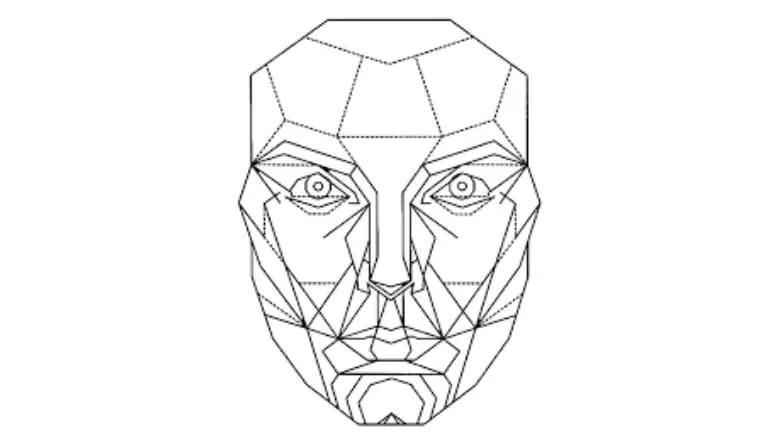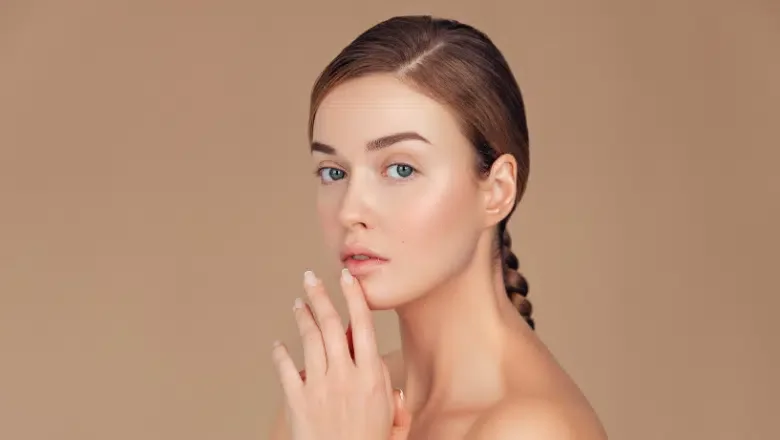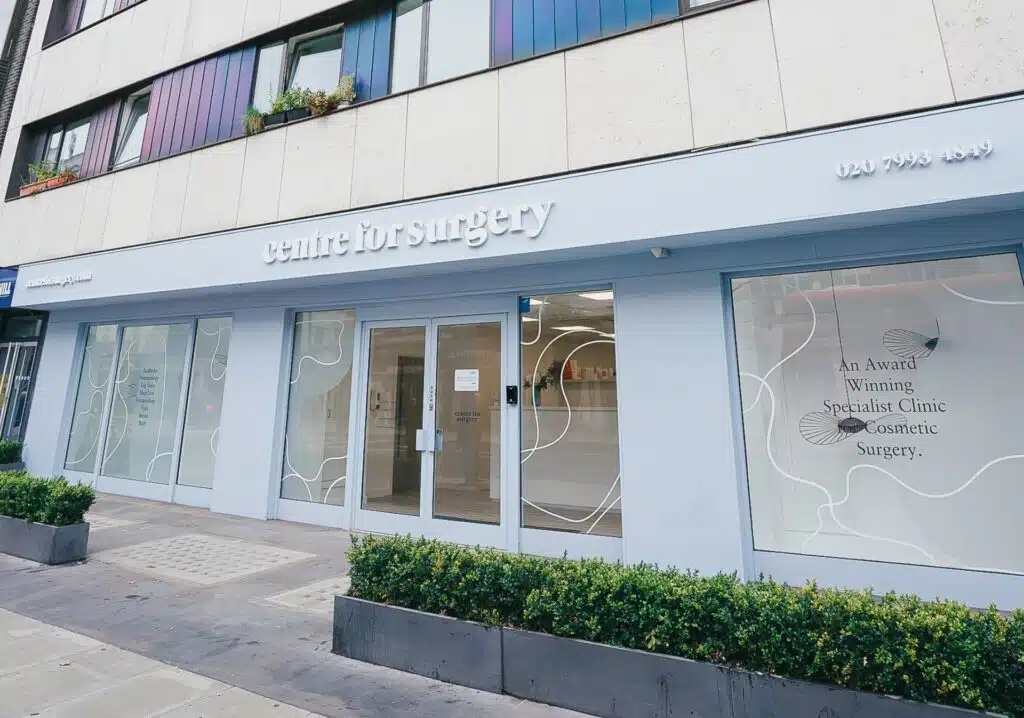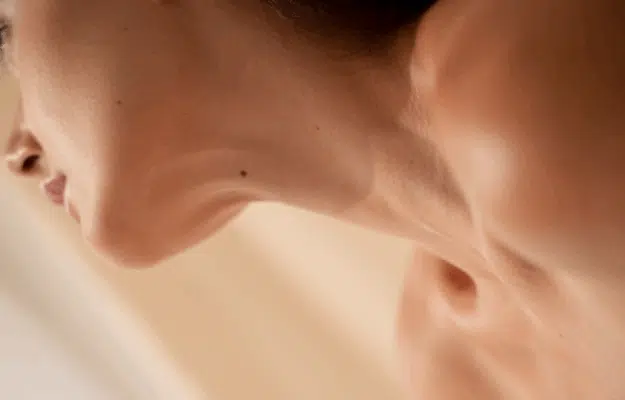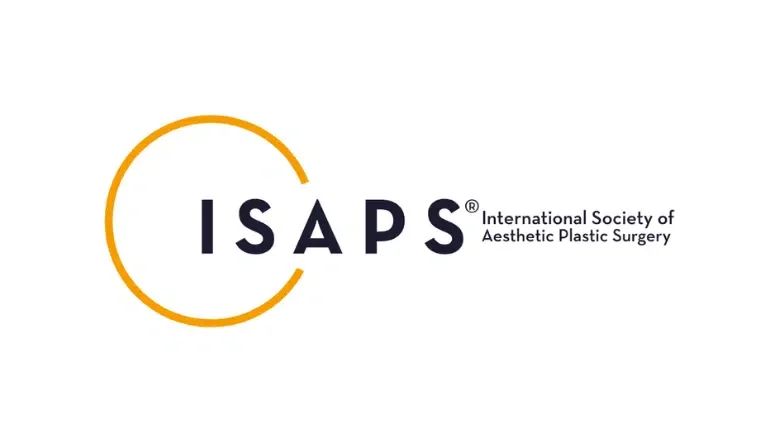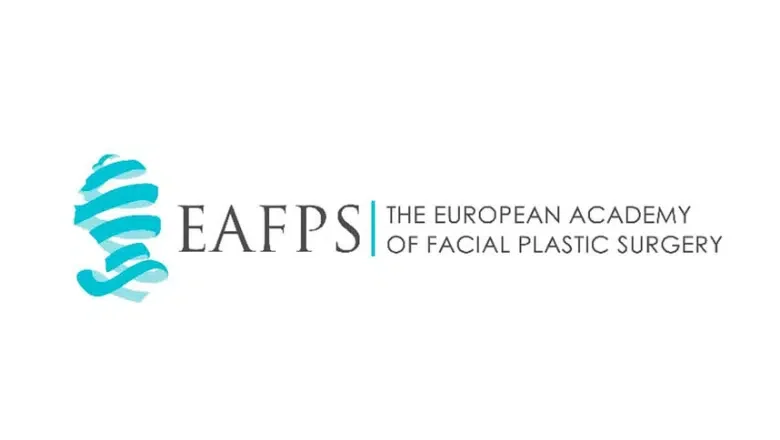The Golden Ratio and Its Role in Facial Beauty
Throughout the ages, humanity has been captivated by the concept of beauty, always searching for the elusive elements that make something genuinely appealing to the eye. While definitions of beauty can vary tremendously across different cultures and periods, there are specific patterns and proportions that many deem universally attractive. Among these, the Golden Ratio stands out.
RELATED: Features of a Beautiful Face According to Science
The Golden Ratio, in essence, is a mathematical principle. For many centuries, it has served as a benchmark for beauty, harmoniously blending mathematics with aesthetics. When applied to the face, the Golden Ratio can gauge the balance and proportion of facial features. This ratio, rooted deeply in nature and art, suggests that certain proportions and arrangements of features are inherently more attractive to the human eye.
At the heart of London, you’ll find Centre for Surgery. Here, a team of highly specialised plastic surgeons, who have dedicated their lives to understanding and mastering the intricacies of beauty, offer a broad spectrum of procedures. With their extensive experience spanning decades, they skilfully weave both surgical and non-surgical techniques, always aiming to bring patients closer to their ideal appearance while respecting the time-honoured principles of beauty, such as the Golden Ratio.
Delving into the Mystery of the Golden Face Ratio
At its core, the Golden Ratio is a mathematical relationship. It’s a specific number, approximately 1.618, which represents the unique ratio between two proportions. Often hailed by names like the Divine Proportion or the Golden Mean, this concept has fascinated thinkers, artists, and designers for centuries.
What makes the Golden Ratio so intriguing? Its allure lies in its inherent balance and harmony. When used in design, whether it’s in art, architecture, or even nature, it tends to produce structures and forms that many consider to be visually appealing and harmonious. Its influence spans from the spirals of galaxies and patterns in nature to the masterpieces of renowned artists and the blueprints of famous architectural wonders.
The power of the Golden Ratio is in its universal ability to create beauty and order, transcending time and culture. Its presence is everywhere, subtly influencing our perception of beauty and harmony in the world around us.
The Face Golden Ratio
For ages, humans have been captivated by the idea of beauty, endlessly exploring ways to define and understand it. One concept that has repeatedly emerged as a consistent measure of beauty is the Golden Ratio, often referred to in the context of facial aesthetics as the Phi Ratio. This proportion, 1.618 to 1, is believed to provide the blueprint for what constitutes a harmoniously proportioned face.
Incorporating the Phi Ratio in facial analysis provides fascinating insights. Let’s break it down: Imagine measuring the width of an eye. Ideally, according to the Golden Ratio, the distance between the eyes should be around 1.618 times the width. Similarly, when you look at the relationship between the mouth’s width and the span between the eyes and the mouth, the same proportion – 1.618 to 1 – should ideally emerge. The nose’s intriguing dimensions also play a role; its ideal length should be roughly 1.618 times the width at its base.
However, while the Golden Ratio provides a mathematical lens for viewing facial harmony, beauty remains a multifaceted concept, encompassing much more than measurements and ratios. Beauty standards evolve, shaped by cultural, personal, and societal influences. Therefore, while the Phi Ratio serves as a fascinating guide to facial proportions, it’s essential to recognise that beauty’s true essence lies in its diverse interpretations and the unique features that make each of us stand out.
The Golden Ratio: Crafting Harmony in Facial Aesthetics
The golden ratio, an ancient mathematical principle, has found its place in the modern world of facial aesthetics, guiding the pursuit of beauty and harmony. This ratio, approximately 1.618, is believed to underpin some of the most admired and aesthetically pleasing forms found in nature and art. When applied to facial aesthetics, it serves as a blueprint for achieving balance and proportion in the human face. Here’s a closer look at how the golden ratio influences various aspects of facial aesthetics, from the spacing of the eyes and nose to the contours of the lips and chin.
Eyes, Nose, and the Art of Proportion
One of the key areas where the golden ratio is considered is in the relationship between the eyes and the nose. Aesthetically speaking, the width of the nose is ideally 1.618 times the distance between the eyes. This proportion ensures that the features are balanced to each other, contributing to the overall harmony and attractiveness of the face.
The Ideal Width of the Face
The golden ratio also plays a role in determining the ideal width of the face. It is suggested that a face is perceived as more aesthetically pleasing when its width is about 1.618 times the width of the mouth. This application of the golden ratio helps to create a sense of balance across the facial features, making the face appear more proportionate and visually appealing.
Balancing the Forehead and Lower Face
Dividing the face into thirds is another method used to apply the golden ratio to facial aesthetics. This approach considers the proportions of the forehead, mid-face, and lower face. A face that adheres to these proportions, guided by the golden ratio, is often seen as more harmonious. This division helps in assessing and planning for cosmetic enhancements, ensuring that each section of the face contributes to an overall sense of balance.
Harmonising the Lips and Chin
In the realm of plastic surgery and cosmetic procedures, the golden proportion face serves as an invaluable guide. Surgeons aim to adjust the lips, chin, and other facial features to align more closely with the golden ratio. This pursuit of facial harmony involves creating a balance between the various elements of the face, ensuring that each feature complements the others. The goal is to enhance the natural beauty of the individual while maintaining a sense of proportion and symmetry.
Facial Features: Key Components of Beauty
Beauty is an intricate concept, moulded by both culture and personal preferences. While interpretations of beauty vary globally, certain facial features are frequently associated with attractiveness. Let’s delve into some of these universally admired traits:
1. Symmetry: Ever noticed how faces deemed ‘beautiful’ often have a balanced appearance? Symmetry plays a crucial role here. Many believe a symmetrical face signifies good health and genes, making it instinctively appealing.
2. Proportion: Beauty often lies in harmony and balance. Whether it’s the distance between the eyes or the relationship between the nose and mouth, proportions can be influential. While the Golden Ratio serves as a general guideline, individual preferences and unique facial features also play a pivotal role.
3. Flawless Skin: A radiant, blemish-free complexion is a universal sign of youth and vigour. Such skin can amplify the allure of a face, making it seem more vibrant and healthy.
4. Lively Eyes: There’s a reason they say eyes are the window to the soul. Bright and expressive eyes can communicate a myriad of emotions, from curiosity to warmth, drawing people in.
RELATED: Eyelid Rejuvenation Options &- Solutions for Younger Looking Eyes
5. Plump Lips: Fuller lips often signify youthfulness and can add a touch of elegance to the face. The appeal of plump lips is often accentuated when they complement the face’s overall shape and size.
6. Chiselled Jawline: A strong and defined jawline can lend structure to the face, creating a harmonious balance with other features and enhancing the overall profile.
RELATED: What is the Ideal Female Jawline?
7. Proportional Nose: The nose acts as the centrepiece of the face. A nose that aligns well with other facial features, neither too big nor too small, often enhances beauty.
RELATED: What is a Perfect Nose?
The Golden Ratio: A Tool, Not a Rule, in Defining Beauty
The concept of the Golden Ratio has long been seen as a hallmark of ideal proportions, particularly in facial aesthetics. Yet, it’s essential to understand it as a guideline—a tool in the vast toolkit of beauty standards, rather than an inflexible rule.
Cultural nuances and individual preferences significantly impact the concept of beauty. For instance, while one culture might prize almond-shaped eyes, another might celebrate rounder ones. Similarly, the appeal of lip fullness or chin prominence can differ depending on societal norms and individual tastes.
This brings us to a crucial point: beauty is multifaceted. The Golden Ratio offers a perspective, a mathematical lens through which we can view proportions. Yet, beauty is shaped by a mosaic of factors, from the uniqueness of individual features to one’s age and skin quality.
So, when considering facial aesthetics, it’s vital to approach the Golden Ratio as one of many considerations. The most harmonious outcomes often result from blending this mathematical guideline with a nuanced understanding of individual desires and broader cultural values, creating a personalised vision of beauty that resonates deeply.
Exploring the Diverse Standards of Facial Beauty Across Genders
When it comes to understanding what makes a face attractive, it’s clear that beauty is not one-size-fits-all. The characteristics that define attractiveness vary significantly between men and women, influenced by a blend of cultural norms, personal preferences, and biological factors. This exploration delves into the general trends that shape our perceptions of beauty for each gender, highlighting how distinct features contribute to the ideal of attractiveness.
The Hallmarks of Masculine Attractiveness
In the realm of male beauty, certain physical traits are particularly desirable. A prominent, well-defined jawline, for instance, is often seen as a cornerstone of masculine attractiveness, suggesting strength and determination. Similarly, a pronounced brow ridge adds to a rugged, masculine allure, framing the eyes in a way that is traditionally associated with male beauty.
RELATED: Male Plastic Surgery
Facial hair, too, plays a significant role in perceptions of masculinity. A neatly groomed beard or a bit of stubble can enhance a man’s jawline and overall facial structure, lending an air of maturity and rugged charm. Beyond these elements, angular and chiselled facial features are frequently admired in men, contributing to a look that is both striking and traditionally masculine.
The Essence of Feminine Beauty
Turning to feminine beauty, the traits that tend to be celebrated are markedly different, emphasising softness and delicacy. Women’s attractiveness is often associated with soft, rounded facial contours, which convey a sense of gentleness and approachability. Full lips are another feature that is widely regarded as desirable, adding to the overall impression of femininity and allure.
Larger, expressive eyes are also a key element of feminine beauty, associated with openness and emotional depth. Furthermore, smooth, clear skin is highly prized, seen as a marker of health and youthfulness.
The Golden Ratio: A Universal Measure with Gender-Specific Details
Interestingly, the concept of the golden ratio—a mathematical equation deemed to outline the parameters of perfect facial symmetry and proportion—applies to both men and women. However, how it is used to evaluate beauty varies between genders. For women, the ideal might include features like a delicately sized nose and plumper lips, whereas for men, a stronger jawline and broader facial structure might be emphasised as aligning with the golden ratio’s ideals.
Conducting the Golden Ratio Face Test from the Comfort of Your Home
The quest for beauty and symmetry has long fascinated humans, leading to the creation of various methods to quantify and understand attractiveness. One such method is the Golden Ratio Face Test, a fascinating way to explore facial harmony and proportion using the principles of the golden ratio. This mathematical formula, revered for its aesthetic appeal, can be applied to the human face to gauge how closely it aligns with ideal proportions. Here’s a straightforward guide to conducting this intriguing test at home, requiring nothing more than a ruler and a calculator.
Step-by-Step Guide to Calculating Your Facial Golden Ratio
1. Understanding the Ideal Facial Proportions
The golden ratio, approximately 1.6, represents what many consider the epitome of beauty in terms of facial proportions. To begin, you’ll need to determine the overall balance of your face by measuring its length and width. Divide the length of your face by its width; a quotient close to 1.6 suggests your facial dimensions align with the golden ratio.
2. Measuring Key Facial Segments
To delve deeper into the specifics of facial harmony, measure three critical segments of your face:
- From Forehead to Eyes: Start by measuring from your forehead hairline to the spot between your eyes. This distance sets the stage for the rest of your measurements.
- Eyes to Nose: Next, measure from the point between your eyes down to the bottom of your nose. This segment plays a crucial role in determining facial balance.
- Nose to Chin: Finally, measure the distance from the bottom of your nose to the bottom of your chin. The ideal scenario is for these three measurements to be roughly equal, indicating a face that closely matches the golden ratio.
3. Evaluating Facial Symmetry
Facial symmetry is another critical component of the golden ratio. For a face that embodies perfect proportions:
- Ear to Nose Length: The length of your ear should be equal to the length of your nose, a harmony that underscores the importance of proportional features.
- Eye Width: The width of one eye should match the distance between your eyes, further emphasising the role of symmetry in perceived beauty.
Approaching the Golden Ratio Through Cosmetic Procedures
The Golden Ratio has long been seen as an aesthetic ideal, and with the advancement of cosmetic procedures, many individuals are exploring ways to approach these proportions. If you’re considering cosmetic treatments to bring your features closer to this ideal, here are some procedures to consider:
Enhancements and Corrections for the Nose
-
Rhinoplasty (Nose Surgery):
- What is it? A surgical intervention that modifies the structure and shape of the nose.
- Purpose: Rhinoplasty aims to enhance the aesthetic appeal of the nose, ensuring it fits harmoniously with other facial features. By adjusting its size, shape, or alignment, surgeons can provide a more proportionate and balanced appearance.
- Septoplasty:
- What is it? A surgical procedure focused on the nasal septum.
- Purpose: The primary goal of septoplasty is to rectify a deviated septum. This not only improves the functional aspects of the nose, like breathing difficulties, but can also have an aesthetic impact by ensuring the nose appears straighter and more symmetrical.
- Non-Surgical Nose Job (Liquid Rhinoplasty):
- What is it? A minimally invasive treatment that uses dermal fillers instead of surgical interventions to reshape the nose.
-
Purpose: Liquid rhinoplasty offers an alternative for those who are not ready for surgical commitment. It can address issues like small bumps, dips, or irregularities on the nose, offering subtle enhancements and a more refined profile. However, it’s essential to note that the results are temporary, typically lasting between 6 to 18 months, depending on the type of filler used.



Revitalising and Refining Eye Area Procedures
-
Blepharoplasty (Eyelid Surgery):
- What is it? A surgical procedure designed explicitly for the eyelids.
- Purpose: Over time, the eyelids can accumulate excess skin and fat, leading to drooping or puffiness. Blepharoplasty can rejuvenate the eye area by eliminating this excess skin and fat. The outcome? A more rested and alert appearance, free from the sagging or baggy look.
-
Canthoplasty:
- What is it? A surgical modification of the eye’s outer corners.
- Purpose: Eyes can sometimes appear downturned or too round. Canthoplasty offers a way to reposition the outer corners of the eyes, creating a more almond-like, inviting shape, which can impart a youthful allure.
-
Brow Lift:
- What is it? A surgical lifting of the forehead skin and underlying tissues.
- Purpose: With age, the eyebrows can sag, causing a tired or stern appearance. A brow lift revitalises the face by elevating drooping eyebrows and reducing the appearance of lines and creases on the forehead.
-
Dermal Fillers for the Eye Area:
- What is it? A non-surgical treatment using injectable substances to enhance facial features.
- Purpose: The area around our eyes is prone to signs of ageing, including wrinkles, fine lines, and hollowness. Dermal fillers can address these issues by plumping up the under-eye area and smoothing wrinkles or fine lines, giving a fresher, brighter look.
Rejuvenating and Refining Face & Chin Procedures
-
Facelift:
- What is it? A comprehensive surgical procedure targeting the mid to lower regions of the face.
- Purpose: Over time, skin loses its elasticity, leading to drooping. A facelift effectively addresses this by tightening sagging skin, refining the jawline, and enhancing the neck contour. The result? A more youthful, proportionate, and balanced facial appearance.
-
Chin Augmentation:
- What is it? A surgical or non-surgical procedure to enhance the chin’s prominence and shape.
- Purpose: A well-defined chin plays a vital role in achieving a balanced facial profile. Chin augmentation tailors the size and form of the chin, ensuring it complements other facial features for a harmonious appearance.
-
Buccal Fat Removal:
- What is it? A procedure to extract fat pads from the cheeks.
- Purpose: For individuals desiring higher cheekbone prominence and a slimmer facial contour, buccal fat removal offers a solution. By removing some cheek fat, the face gains a more chiselled and sculpted look, often deemed desirable in the context of the Golden Ratio.
-
Anti-wrinkle Treatments and Facial Fillers:
- What is it? Non-surgical treatments using injectable substances to refine and enhance facial features.
- Purpose: Beyond offering volume to areas like lips or cheeks, these treatments can also address signs of ageing. By filling out areas with volume loss and smoothing lines, they not only contribute to ideal proportions but also impart a rejuvenated appearance.
The Allure of Fuller Lips through Lip Augmentation
Lip augmentation, particularly through the use of lip fillers, has emerged as a sought-after non-surgical treatment for enhancing the volume and shape of the lips. This cosmetic procedure involves the careful injection of a filler material into the lips, aiming to add fullness and redefine their contours. The desire for voluminous lips is not merely a trend; it is deeply rooted in the concept of the golden ratio, which is often associated with facial beauty. Fuller lips are considered a key element in achieving what is often referred to as the “golden ratio face,” a standard of beauty based on symmetrical and proportionate facial features. Beyond aesthetics, augmented lips can also provide a rejuvenating effect on one’s overall facial appearance, contributing to a more youthful and vibrant look.
RELATED: Current Popular Trends in Lip Filler Treatments
Ear Reshaping: Achieving Symmetry with Otoplasty
Otoplasty, or ear reshaping surgery, addresses concerns related to the size, shape, and positioning of the ears. This surgical procedure can involve various techniques, such as pinning the ears closer to the head, reducing the size of large ears, or correcting deformities that may have been present from birth or resulted from injury. The goal of otoplasty is to achieve a more balanced and proportional look, which, in turn, can enhance an individual’s self-confidence and comfort in their appearance. The significance of ear proportions in meeting the criteria for the golden ratio face underscores the importance of this procedure for those seeking facial harmony.
RELATED: Achieving Symmetry and Confidence: Insights into Ear Pinning


How to Get a Beautiful Face
The journey to achieving a radiant face extends beyond the physical. It involves nurturing both our inner health and outer beauty. While we are born with specific facial attributes, there’s much we can do to enhance our natural beauty. Before resorting to surgical or injectable solutions, consider these holistic approaches:
1. Hydration is Key:
- Drink ample water throughout the day. It flushes out toxins and helps in maintaining skin elasticity and suppleness.
2. Nourish from Within:
- Adopt a balanced diet filled with colourful fruits, verdant vegetables, and nutrient-rich whole grains. These foods provide essential vitamins and antioxidants that promote skin health.
3. Rest and Rejuvenate:
- Aim for 7-9 hours of sleep. A well-rested face minimises dark circles, puffiness, and a tired appearance.
4. Protect and Preserve:
- Shield your skin from the harmful effects of smoking and prolonged sun exposure. Both can accelerate skin ageing. When outdoors, always wear sunscreen.
5. Gentle Care Routine:
- Select gentle cleansers and moisturisers tailored to your skin type. Harsh products can strip the skin of its natural oils, causing imbalance.
6. Regular Exfoliation:
- Incorporate a weekly exfoliation into your regimen. This not only removes dead skin cells but also stimulates circulation, giving your face a natural glow.
FAQs about Facial Beauty and the Golden Ratio
How do genetics influence facial beauty?
Genetics play a pivotal role in shaping our facial features. Our genes predetermine elements such as facial structure, skin tone, and hair colour. For instance, inherited traits define our face’s contour, eye spacing, and nose size. Additionally, genetic factors influence skin quality, colour variations, and the ageing process of our skin over time. However, environmental factors, personal habits, and how we care for our skin can significantly modify these genetic predispositions. It’s essential to understand that while genes do set a foundation, the complete picture of facial beauty is multi-faceted and influenced by several factors.
Is the Golden Ratio a Definitive Standard for Facial Beauty?
The golden ratio, often hailed as a benchmark for facial beauty, is not an inflexible rule that dictates attractiveness. Instead, it serves as a guideline—a mathematical approach to understanding symmetry and proportion in facial features. Beauty, however, is a multifaceted concept that transcends strict mathematical formulas. It is influenced by a myriad of factors, including cultural, social, and personal preferences. The idea of beauty is subjective, and what one person finds appealing, another may not. The golden ratio can offer insights into the balance and harmony of facial features, but it is just one of many aspects that contribute to the perception of beauty.
How does the Golden Ratio relate to facial beauty?
The Golden Ratio, approximately 1:1.618, is a mathematical principle that describes ideal proportions. When applied to facial aesthetics, it offers a guideline for achieving facial balance and symmetry. Ideally proportioned facial features, according to this ratio, are often viewed as more appealing. While the Golden Ratio offers a framework, it’s crucial to factor in individual uniqueness and overall facial harmony when considering cosmetic enhancements.
Can the Golden Ratio Be Applied Universally Across Different Ethnicities and Facial Shapes?
Indeed, the golden ratio is a concept that can be applied across all ethnicities and facial shapes. This universal applicability underscores the versatility and broad relevance of the ratio as a tool for analysing facial aesthetics. However, it’s crucial to acknowledge the diversity and uniqueness of individual faces. Ethnicity and facial shape play significant roles in determining what is considered harmonious or aesthetically pleasing. Each ethnic group comes with its distinct facial characteristics, which means that the application of the golden ratio should be adapted to respect these differences. Consulting with an aesthetic professional who understands the nuances of facial diversity can ensure that recommendations are personalised and sensitive to individual characteristics, ensuring outcomes that are both beautiful and respectful of one’s heritage.
Which cosmetic procedures are popular for enhancing facial beauty?
Various cosmetic procedures cater to enhancing different aspects of facial beauty. Some of the widely adopted ones include:
- Rhinoplasty: Modifies the nose’s shape and size, bringing a harmonious balance to the face.
- Blepharoplasty: Addresses drooping eyelids by removing excess skin and fat.
- Facelift: Targets sagging skin, refining the jawline and neck area.
- Chin Augmentation: Enhances chin proportions to achieve a balanced facial profile.
- Lip Augmentation: Boosts lip fullness and contour.
Can the Golden Ratio single out specific attractive facial features?
While the Golden Ratio serves as a helpful benchmark for assessing facial proportions, beauty remains subjective, differing across individuals and cultures. Rather than a strict yardstick, the Golden Ratio should be seen as one among many tools or perspectives to understand facial attractiveness.
Why Choose Centre for Surgery?
In a world filled with choices, Centre for Surgery stands out as a leader in the realm of cosmetic and plastic surgery. Our commitment to patient care, safety, and exceptional results has built a reputation that precedes us. Here’s why many choose Centre for Surgery as their preferred destination for aesthetic transformation:
🔹 Experience Matters: Our team comprises specialist plastic surgeons with decades of collective experience, ensuring you’re in the most capable hands.
🔹 Cutting-Edge Technology: We harness the power of the latest surgical techniques and technology to deliver results that not only meet but exceed expectations.
🔹 Personalised Care: We understand that every individual is unique. Our approach is tailored to match your specific needs and aspirations.
🔹 Safety First: At Centre for Surgery, patient safety is paramount. Our state-of-the-art facility adheres to the highest standards of hygiene and surgical safety.
🔹 Comprehensive Aftercare: Your journey with us doesn’t end after the procedure. We offer a robust aftercare programme to ensure optimal healing and results.
🔹 Transparent Pricing: No hidden costs. We believe in transparent pricing, ensuring our patients are well-informed and confident in their investment.
What Our Patients Say
“From my very first consultation to my final post-op check-up, Centre for Surgery exceeded all my expectations. The results are incredible and the care I received was top-notch.” – Sophie L.
“I was nervous about undergoing surgery, but the team at Centre for Surgery made me feel at ease. The entire process was smooth, and I’m thrilled with my results!” – David P.
“Centre for Surgery is a class apart. The staff, the facility, and the overall experience were fantastic. I couldn’t have asked for better results.” – Aisha K.
“The aftercare I received was exemplary. Any concerns I had were addressed promptly, and the team was always available to answer my questions.” – Michael T.
Your transformation journey begins here. Choose Centre for Surgery for an unparalleled experience in aesthetic excellence.

